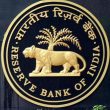Neobanks: are they up to the fight?
As of February 2022, there are over 250 neobanks all over the world. Almost every one of them is working in a niche, targeting a product (lending, payments, wealth), a customer segment (retail, business), or a community (youth, gig workers, migrants).

Neobanks are fighting their bigger rivals in three ways: acquiring customers, engaging with those customers, and making money off them
Another thing they have in common is a stated intent to disrupt the incumbent banks and take business away from them. Our view is that it is too early to accept or dispute this claim. What’s more, this statement does not reflect the whole truth of the relationship between neo and established banks, which is one part cooperation and one part competition.
Currently, not even the most successful neobanks have taken notable market share away from incumbents. But collectively, they can create serious concerns by chipping away at the most profitable parts of the leaders’ business.
Typically, neobanks are fighting their bigger rivals in three ways – in acquiring customers, in engaging with those customers, and in making money off them.
This piece focuses on these evolving competitive aspects of neobanking.
Neobanks are gathering customers, but also need to engage them
Neobanks have chosen the customer experience route to acquire customers, because that is their biggest strength versus the incumbents. Common tactics include attractive pricing by way of low-interest rates on loans or lower fees on banking transactions and attractive rewards.
This approach has served neobanks well in every country, helping them onboard a huge number of customers very quickly. However, other digital participants, such as challenger banks, big tech players, and even the digital-only propositions of incumbent banks (think Marcus by Goldman Sachs or digibank by DBS) have seen similar success.
With the playbook being similar, how will so many neobanks popping in different geographies will differentiate and succeed? In our experience of supporting financial institutions in over 100 countries, any new entrant needs to find a different business model or at least a focused viable market or affinity group, and serve it well. Examples include GoHenry (addressing teenagers), Aspiration (fighting climate change), and Majority (migrant communities).
Neobanks focusing on adjacent opportunities, such as Square Financial Services, which is targeting its merchant base, or RazorpayX, which is extending cash management services to its business customers, are even better placed.
However, neobanks need to do more than simply acquire customers to sustain their business; they also need to engage with them meaningfully. But then the engagement dynamics are evolving even fast.
The engagement edge is blunting as transactions flee to consumer apps
Just like they all follow a similar strategy for acquiring customers, neobanks typically use a similar playbook when it comes to engagement. For instance, most of them use insights to help customers understand their financial status (for example, overspent on eating out), predict events (such as a cash crunch or one-time outgo), and recommend actions based on individual context (cut back discretionary spending or move money to better yielding investments).
Rewards and gamification are some of the ways by which neobanks are attracting the attention of customers. Providers are also riding on commerce opportunities, to be a part of the primary consumption process – buying a car, or planning a vacation – because that is where customers spend most of their time.
Many firms are launching new products that by definition increase the frequency of engagement – for example, nano deposits and buy now, pay later (BNPL) option, which is effectively, a small ticket loan for financing commerce purchases.
But with open banking and embedded finance, banking transactions are leaving banking apps altogether. Consider India’s UPI transactions, which in January 2022 alone, numbered 4.6 billion, with Walmart’s PhonePe and Google Pay originating over 80% percent of the transactions. This is even though there are over 65 other apps from incumbents and neobanks to do the same.
That’s not all. Google Pay already offers loans and term deposits and will offer many other banking products in the future. Thus the key question is – how will neobanks engage their customers when they don’t need to use banking apps, and will instead use consumer-facing apps for banking?
Open, which is among the first neobanks in Asia focused on small and medium size businesses (SMBs), is one of the few trying to find a solution. Its second brand, Zwitch, offers banking services to other aspirants via APIs, effectively changing the original business-to-consumer (B2C) model to business-to-business-to-consumer (B2B2C). Such approaches will put a neobank in direct competition with other specialists Banking-as-a-Service (BaaS) providers, such as Galileo, Marqeta, and Stripe.
This example shows that while neobanks may focus their early efforts on competing with incumbent banks, they will soon be surrounded by competition from big tech and consumer-facing brands consuming BaaS services to serve customers.
Neobanks must compete on monetisation, but how?

Puneet Chhahira: “Whatever be the monetisation model, it should be part of the plan right from the start”
At that time, how can neobanks not only hold on to their customers, but also earn some income from engaging them? Neobanks are still evolving their monetisation models; in many markets these are built on merchant discount rate (MDR) earnings from debit card transactions. However, that model is at risk from regulations that are driving down MDR.
Hence there is a need to work on alternative sources of income, such as lending, investment and referral.
Each area has its opportunities and challenges: neobanks have the technology and analytical expertise to personalise loans, but are they attracting creditworthy customers? The other question is how long they can continue to lend at competitive rates if they do not have their own low-cost deposits.
Peer-to-peer (P2P) lender LendingClub saw its net income go up from 0.2 million to 29 million for the same size of originations when it acquired a bank and, therefore, its deposit-taking capabilities. Low-cost lending needs low-cost funding.
The investment business can yield good returns, but requires dedicated efforts to break into. Also, the competition is fierce both from traditional companies and new-age digital advisors. The third option – referral fee – is a small opportunity to start with, so cannot be the mainstay of a neobank’s existence.
Also, whatever be the monetisation model, it should be part of the plan right from the start. Once something is offered free, it is almost impossible to get customers to pay for it later.
Neobanks are entering the banking industry at a crucial juncture. As the industry unbundles and bundles repeatedly, it is presenting neobanks, tech giants, and other non-bank players, with several opportunities.
The way to respond is by using first principles thinking and building a differentiated business model around getting customers’ jobs to be done – to create and deliver unique customer value through better offerings, engaging experiences, and purposeful partnerships. The standard playbook is unlikely to deliver winners in such a competitive market.
By Puneet Chhahira, Head of Marketing and Platform Strategy, Infosys Finacle
Banks in over 100 countries rely on Finacle’s industry leading digital suite to delight their customers.
Finacle Digital Engagement Suite provides a solid digital banking platform solution that caters to the needs of the digital economy and enables banks to deliver next-generation services on digital channels.











































